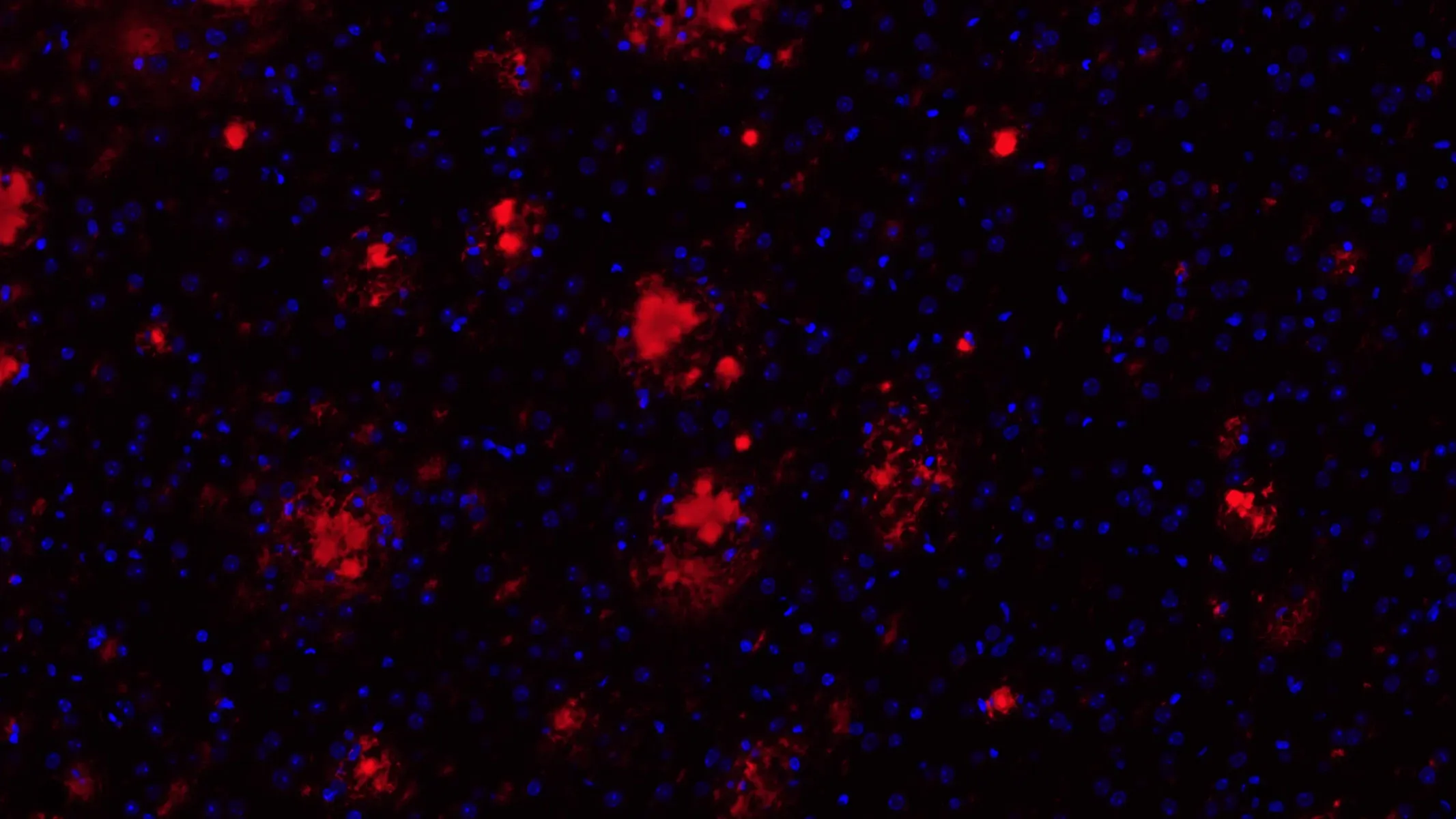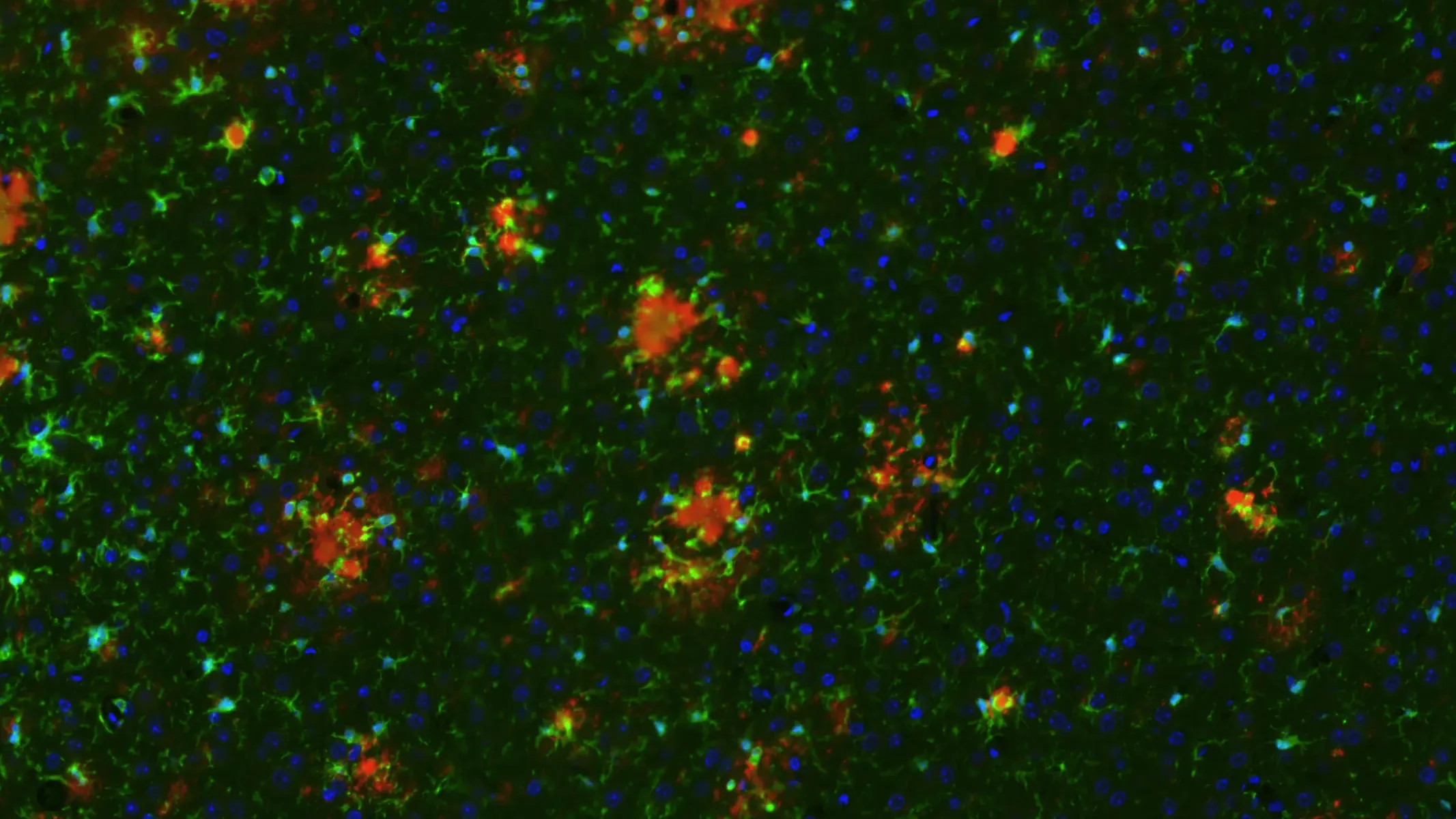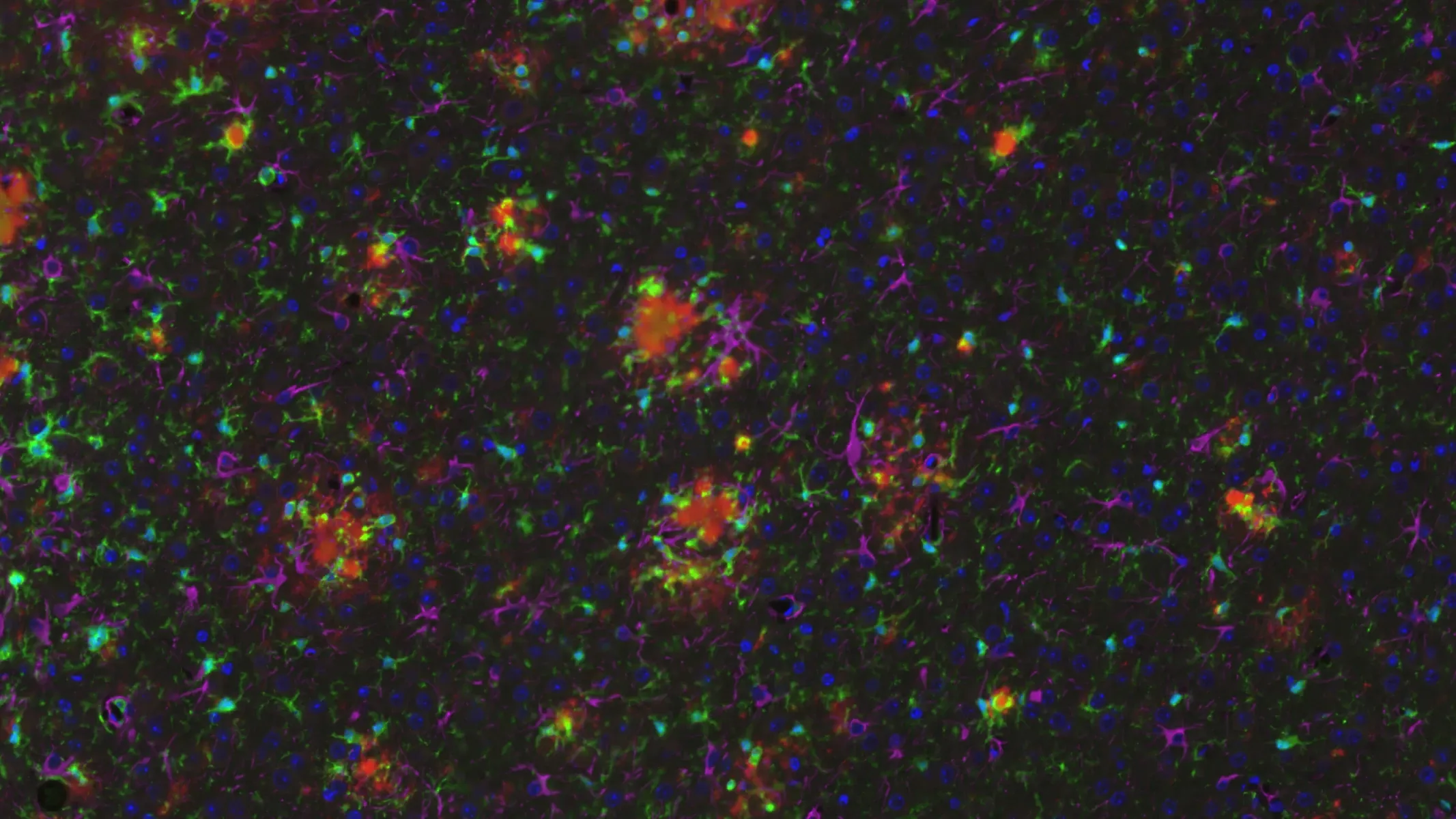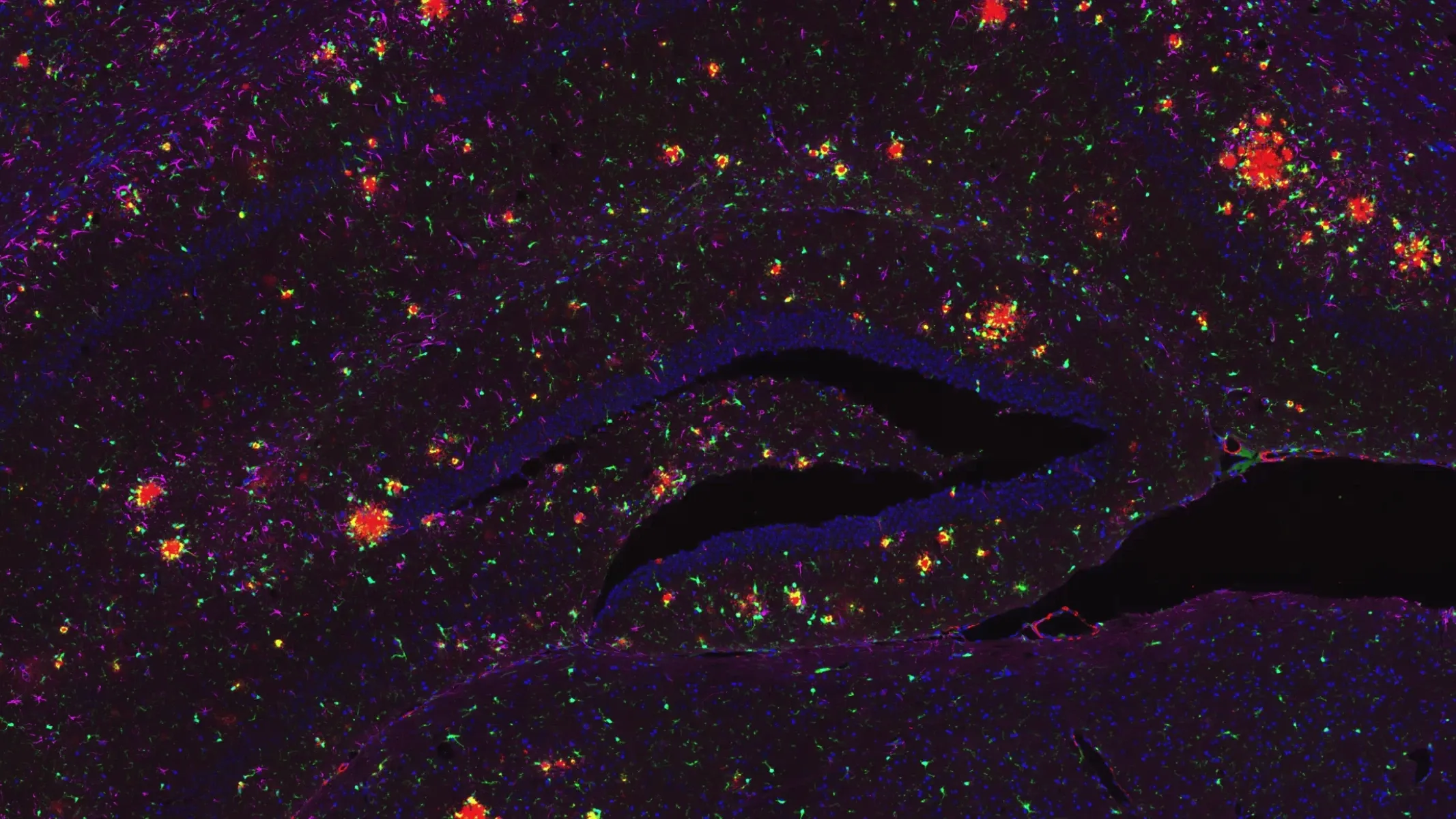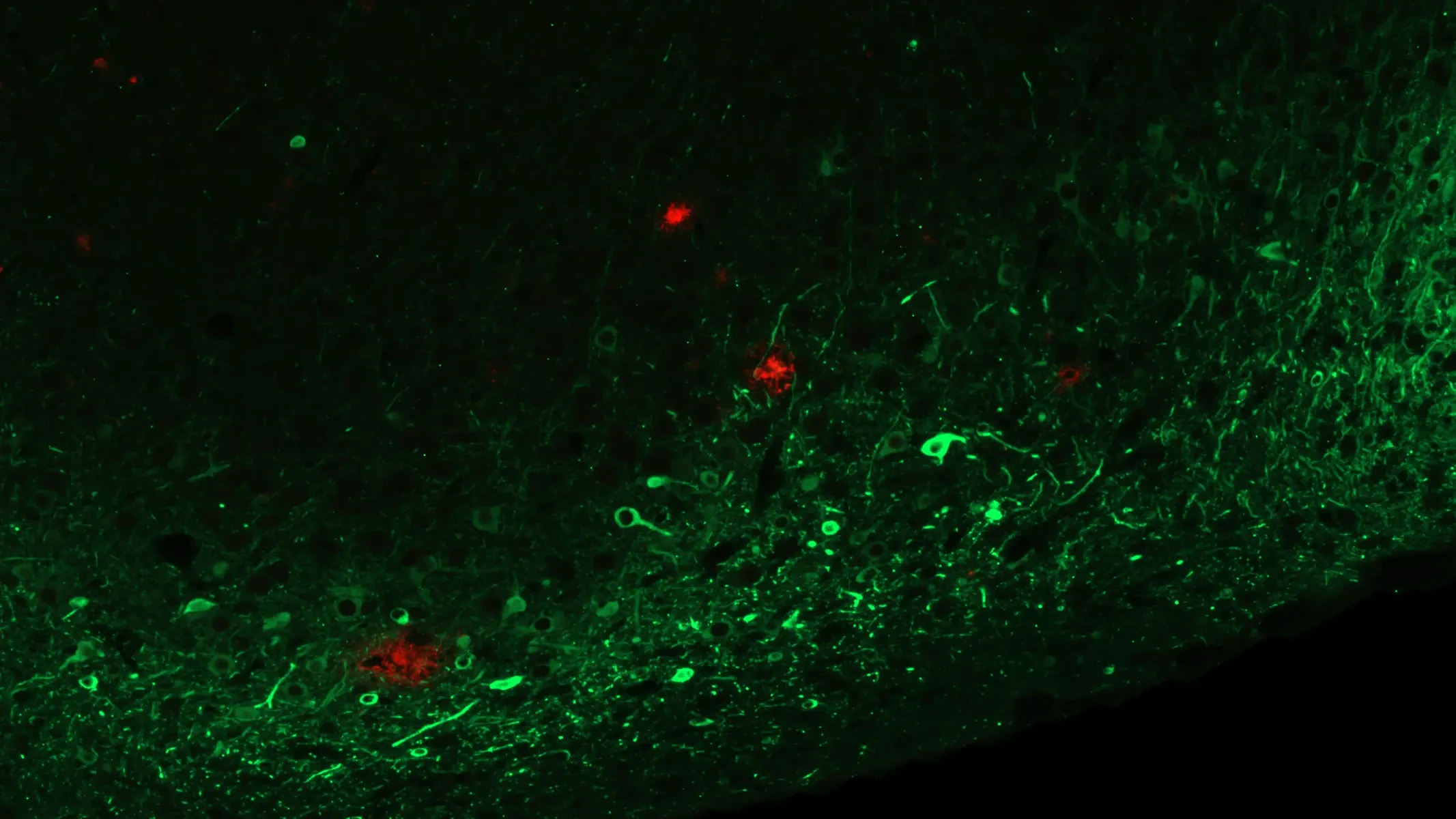아밀로이드-β 및 타우 공병리 마우스 모델 (APP/PS1/hTau) 개요
이 알츠하이머 병 모델을 위해, 우리는 이중 전유전자 APP/PS1 마우스의 뇌 여러 부위에 AAV-hTau (야생형 2N4R 인간 타우)를 과발현하는 AAV를 다중 양측 스테레오택시스 주입을 수행합니다 .
이 마우스 모델은 인간 알츠하이머 병의 주요 특징을 재현합니다:
- 아밀로이드-β 플라크
- 세포체와 신경돌기 내 인산화 타우의 집합체
- 활성화된 미세아교세포
- 반응성 아스트로사이트
- 수면 장애
- 뇌의 지역적 위축 (부피 및 피질 두께)을 체내 MRI 검사로 측정함
아밀로이드-β 및 타우 공병리 마우스 모델 (APP/PS1/hTau) 생성
모델 생성 위한 일반적인 흐름도는 다음과 같습니다:
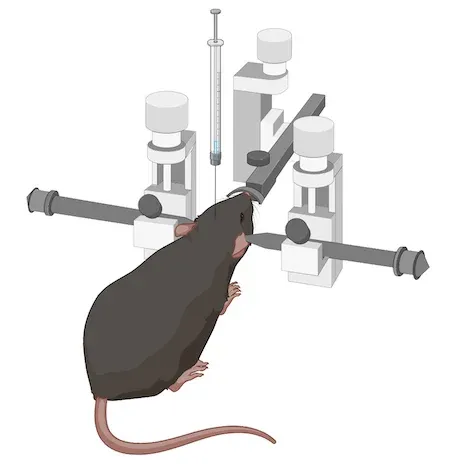
이 특정 모델에서는 일반적으로 6개월령의 APP/PS1 마우스를 사용합니다(그러나 더 어린 또는 더 나이 많은 마우스도 사용할 수 있습니다). 이후 AAV 벡터를 질병 관련 뇌 부위에 다중 부위 스테레오택시스 주입을 수행합니다. 고정밀도 및 정밀도를 위해 디지털 스테레오택시스 장치와 자동화 마이크로인젝터를 사용합니다.
연구의 in vivo 단계는 일반적으로 4~12주 동안 진행됩니다. MRI 뇌 위축과 같은 in-life 측정 지표는 4주 만에 유의미한 효과를 보여줍니다. 따라서 측정 지표 생성은 상대적으로 짧은 시간 내에 제공될 수 있으며, 특히 알츠하이머 병 및 타우병증의 전통적인 타우 전사체 모델과 비교할 때 더욱 그렇습니다.
모델 특성 분석
아래의 인터랙티브 프레젠테이션을 통해 우리 연구팀이 개발한 아밀로이드-β 및 인간 타우 공동 병리(APP/PS1/hTau) 마우스 모델의 특성을 탐색할 수 있습니다. 이 모델에는 생체 내 데이터와 전체 멀티플렉스 면역형광 조직 절편의 고해상도 이미지가 포함되어 있습니다.
왼쪽 패널을 사용하여 이 "이미지 스토리" 를 쉽게 탐색할 수 있습니다.
왼쪽 마우스 버튼을 사용하여 고해상도 현미경 이미지를 이동할 수 있습니다. 마우스/트랙패드(위/아래) 또는 상단 좌측 모서리의 + 및 - 버튼을 사용하여 확대/축소가 가능합니다. 상단 우측의 제어 패널에서 채널 및 세분화 설정의 표시/비표시 전환, 색상 변경, 이미지 설정을 조정할 수 있습니다.
최상의 상호작용 경험을 위해 전체 화면 모드를 권장합니다.
우리의 APP/PS1/hTau 모델에 대한 특성 분석, 검증된 측정 방법, 그리고 전임상 신경과학 CRO 서비스에 대해 자세히 알아보세요.
알츠하이머 병 및 타우병증 모델에 대해 더 알아보세요
관련 콘텐츠
알츠하이머 병 및 타우병에 대한 최신 정보와 동물 모델에서 치료제 평가를 위한 번역 생물표지자의 사용과 관련된 최선의 실천 방법.
알츠하이머병의 성상교세포 형태
성상교세포 형태학적 분석의 개요와 신경 퇴행성 질환 연구 및 신약 개발에 대한 응용.
